EverSewn Hero User manual



I
Important safety instructions
IMPORTANT
DANGER!
WARNING!
When using an electrical machine, basic safety precautions should always be
followed, including the following:
Please read the instruction manual carefully before using this machine.
Keep the instruction manual at a suitable place with the machine and hand it over if
you give the machine to a third party.
To reduce the risk of electric shock:
1. Never leave the machine unattended when it is plugged in.
2. Always unplug this machine from the electric outlet immediately after using and
before cleaning.
3. LED RADIATION: Do not view directly with optical instruments Class.
To reduce the risk of burns, fire, electric shock or injury to persons:
1. The machine mustn't be used by children under 8 or by people with reduced
physical, sensory or mental capabilities or if there is a lack of experience and
knowledge how to operate the machine. Unless they have been given
instruction concerning the use of the machine and the involved risks by a person
who is responsible for their safety.
2. Do not use this machine as a toy. Close attention is necessary when this
machine is used by children, near children or people with reduced sensation.
3. Use this machine only for its intended use as described in this manual. Use only
accessories recommended by the manufacturer.
4. Children should be supervised to ensure that they do not play with the machine.
5. Never operate this machine if it has a damaged cord or plug, if it is not working
properly, if it has been dropped or damaged, or dropped into water. Return the
machine to the nearest authorized dealer or service centre for examination,
repair, electrical or mechanical adjustment.
6. Never operate the machine with any air openings blocked. Keep ventilation
openings of the machine and the foot control free from accumulation of lint,
dust, and loose cloth.
7. Keep fingers away from all moving parts. Special care is required around the
machine needle.
8. Always use the proper stitch plate. The wrong plate can cause needle breakage.
9. Do not use bent needles.
When the machine is not in use or left unattended, always disconnect the
machine from the power supply system. Unplug it from the outlet.

II
10. Do not pull or push the fabric while sewing. This can result in needle breakage.
11. Switch the machine off ("O") when making any adjustments in the needle area,
such as threading or changing the needle, threading the bobbin, or changing the
presser foot, and the like.
12. Always unplug the machine when performing cleaning or maintenance work
such as replacing the sewing light or when making any other user maintenance
adjustments mentioned in the instruction manual (disconnect the power plug).
Cleaning and maintenance work must not be carried out by children without
supervision.
13. Never drop or insert any object into any openings.
14. Use this machine only in dry and protected areas. Never operate the machine in
a damp or wet environment.
15. Do not operate the machine where aerosol spray products are being used or
where oxygen is being administered.
16. To disconnect, turn the power switch to ("O")(off), then remove the plug from the
outlet. Do not unplug by pulling the cord, instead grasp the plug to pull it from
the outlet.
17. If the supply cord of the foot control is damaged, it must be replaced by the
manufacturer or an appropriate service agent or a similar qualified person in
order to avoid endangerment.
18. Never place anything on the foot control.
19. When replacing the light bulb, always use the same type.
20. The machine may only be used in combination with a foot control of the type C-
9000.
21. The sound pressure level during normal operation is lower than 75dB(A).
22. This machine is provided with double insulation (except U.S.A/Canada). Use
only identical replacement parts. See instructions for Servicing of double-
insulated products.

SERVICING OF DOUBLEINSULATED PRODUCTS
In a double-insulated product, two systems of insulation are provided instead of
grounding. No grounding means is provided on a double-insulated product nor
should a means for grounding be added to the product. Servicing a doubleinsulated
product requires extreme care and knowledge of the system and should only be
done by qualified service personnel. Replacement parts for a double-insulated
product must be identical to those parts in the product. A double insulated product is
marked with the words "DOUBLE INSULATION" or "DOUBLE INSULATED".
The symbol may also be marked on the product.
III

IV
Attention!
Note:
All rights reserved
Environmental protection
- This machine is intended for household use only. If used intensively or commercially, regular
cleaning and especially attentive care is required.
- Signs of wear and tear owing to intensive or commercial use are not covered automatically, even if
they occur within the warranty period. The decision on how to deal with any such cases rests with
the local authorised servicing staff.
If the machine is stored in a cold room, it should be brought to a warm room about one hour before
use.
For technical and product improvement reasons, the machine's features, parts and accessory are
subject to unannounced changes and alterations at any time. The accessory included can differ from
country to country.
Ever Sewn is committed to the protection of the environment. We strive to minimize the
environmental impact of our products by continuously improving product Design and our
technology of manufacturing. Do not dispose of electrical machines as unsorted municipal
waste, use separate collection facilities. Contact your local government for information
regarding the collection systems available.
If electrical machines are disposed of in landfills or dumps, hazardous substances can leak
into the groundwater and get into the food chain, damaging your health and well-being.
When replacing old machines with new ones, the retailer is legally obligated to take back
your old machine for professional disposal free of charge.
SAVE THESE INSTRUCTIONS!

3
GETTING READY TO SEW
SEWING BASICS
Contents
Principal parts of the machine ...............................................................................................................6
Accessories ...........................................................................................................................................7
Connecting the machine........................................................................................................................8
Winding the bobbin...........................................................................................................................9-10
Inserting the bobbin .............................................................................................................................11
Threading the upper thread............................................................................................................12-13
Using the needle threader ...................................................................................................................14
Replacing the needle...........................................................................................................................16
Matching needle/ fabric/ thread ...........................................................................................................17
Changing the presser foot ...................................................................................................................18
Type of presser foot chart....................................................................................................................19
Two-step presser foot lifter ..................................................................................................................20
To raise or drop the feed dogs.............................................................................................................20
mbroidery
Normal mode ..................................................................................................................................................21
mode.................................................................................................................................................22
E mode..........................................................................................................................................23
Using the net .......................................................................................................................................15
Adjusting presser foot pressure...........................................................................................................16
Information on the LCD Display .....................................................................................................21-24
Buttons of the machine........................................................................................................................25
Operation buttons...........................................................................................................................26-27
Function buttons.............................................................................................................................28-31
Memory
Pattern chart...................................................................................................................................32-33
Selecting stitch ...............................................................................................................................37-38
Thread tension.....................................................................................................................................34
Useful skills.....................................................................................................................................35-36
Straight stitches and needle position...................................................................................................39
Zigzag stitches.....................................................................................................................................39
Stretch stitch........................................................................................................................................40
Overcasting stitches ............................................................................................................................41
Reverse ..........................................................................................................................................................35
Free arm .........................................................................................................................................................35
Sewing corners ...............................................................................................................................................35
Cutting the thread ...........................................................................................................................................36
Sewing on the heavy fabric.............................................................................................................................36
Using the overcasting foot ..............................................................................................................................41
Using the all purpose foot ...............................................................................................................................41

4
ORDINARY SEWING
Blind hem/ lingerie stitch......................................................................................................................42
Buttonhole stitch.............................................................................................................................43-46
Darning stitch .................................................................................................................................50-51
Zipper insertion...............................................................................................................................52-53
Narrow hemming .................................................................................................................................54
Cording ................................................................................................................................................55
Satin stitch sewing...............................................................................................................................56
Gathering.............................................................................................................................................57
Smocking.............................................................................................................................................58
Free motion darning, embroidery and monogramming ..................................................................59-60
Quilting ...........................................................................................................................................61-62
Fagoting...............................................................................................................................................62
Scallop stitch .......................................................................................................................................63
Walking foot .........................................................................................................................................64
Mirror ...................................................................................................................................................65
Memory...........................................................................................................................................69-73
Making a buttonhole on stretch fabrics ...........................................................................................................46
inserting a centered zipper .............................................................................................................................52
Inserting a side zipper.....................................................................................................................................53
Single cording .................................................................................................................................................55
Triple cording ..................................................................................................................................................55
Darning ...........................................................................................................................................................59
Embroidery .....................................................................................................................................................60
Monogramming...............................................................................................................................................60
Attaching the edge/ quilting guide...................................................................................................................61
Joining the pieces of the fabric .......................................................................................................................61
Patchwork stitching.........................................................................................................................................62
Scallop hem ....................................................................................................................................................63
Scallop edging ................................................................................................................................................63
Combining patterns.........................................................................................................................................69
Editing patterns...............................................................................................................................................71
Clearing patterns ............................................................................................................................................72
Adding patterns...............................................................................................................................................72
Recalling and sewing the memorized pattern.................................................................................................73
Bar tack stitch ......................................................................................................................................47
Eyelet Stitch.........................................................................................................................................48
Button sewing ......................................................................................................................................49
Patchwork stich ...................................................................................................................................62
Elongation............................................................................................................................................66
Using the twin needle .....................................................................................................................67-68

5
APPENDIX
EMBROIDERY
Warning functions.......................................................................................................................101-105
Maintenance...............................................................................................................................107-108
................................................................................................................109-111
Warning message .........................................................................................................................................101
Warning sound..............................................................................................................................................105
Cleaning the screen......................................................................................................................................107
Cleaning the sewing machine surface ..........................................................................................................107
Cleaning the hook.........................................................................................................................................107
Buzzer sound.....................................................................................................................................106
Trouble shooting guide
Important Embroidery information .......................................................................................................74
Attaching the embroidery foot..............................................................................................................77
Embroidery unit overview ...............................................................................................................78-80
Embroidery hoop overview.............................................................................................................81-84
Embroidery design types .....................................................................................................................85
Built-in embroidery pattern ..................................................................................................................86
Built-in embroidery letter ................................................................................................................87-88
Designs from USB..........................................................................................................................89-91
Starting to sew embroidery.............................................................................................................92-93
Editing the embroidery design........................................................................................................94-98
Load a Design after interruption ...................................................................................................99-100
Embroidery threads ........................................................................................................................................74
Lower threads .................................................................................................................................................74
Stabilizer .........................................................................................................................................................75
Adhesive Spray...............................................................................................................................................75
Iron-on interfacing...........................................................................................................................................76
Connecting the embroidery unit......................................................................................................................79
Removing the embroidery unit........................................................................................................................80
Attaching a stabilizer to the fabric...................................................................................................................81
Hopping the fabric...........................................................................................................................................82
Using embroidery sheet..................................................................................................................................83
Attaching the embroidery hoop.......................................................................................................................84
Removing the embroidery hoop......................................................................................................................84
Basic setting ...................................................................................................................................................94
Advanced setting ............................................................................................................................................97

GETTING READY TO SEW
Principal parts of the machine
1. Upper thread guide
2. Presser foot pressure
3. Bobbin thread guide
4. Tension dial
5. LCD display
6. Speed limiting adjustment
dial
7. Face plate
8. Operation buttons
9. Thread cutter
10. Buttonhole lever
11. Auto needle threader
12. Bobbin cover plate
13. Sewing table and accessory
box
14. Horizontal spool pin
15. Hole for second spool pin
16. Bobbin winder spindle
17. Bobbin winder stopper
18. Selection buttons
19. Function buttons
20. Top cover
21. Handwheel
22. Embroidery unit connector
23. Power switch
24. Power cord
25. Foot controller connector
26. Handle
27. Presser foot lifter
28. Drop feed lever
29. Embroidery unit
6

GETTING READY TO SEW
Standard
Optional
1. All purpose foot (T)
2. Zipper foot (I)
3. Buttonhole foot (D)
4. Overcasting foot (E)
5. Blind hem foot (F)
6. Satin stitch foot (A)
7. Button sewing foot (H)
8.
9. Bobbin (3x)
10.
11. Spool holder (Large)
12. Spool holder (Small)
13. Spool pin felt
14. Second spool pin
15. Screwdriver (L & S)
16. Brush/ Seam ripper
17. Needle (3x)
18. Net
19.
20.
21. Hemmer foot (K)
22. Cording foot (M)
23. Quilting foot (P)
24. Darning/ Embroidery foot
25. Gathering foot
26. Twin needle
27. Walking foot
28.
29.
Simple embroidery foot
Embroidery set (L-110*170mm)
Soft cover
Embroidery set (M-100*100mm)
Edge/quilting guide
Embroidery set (S-40*40mm)
21 22 23
25 26 27
123 4
10 11 13
12 14
57
896
1615 17 18
19 20
28 29
Accessories
7
24

GETTING READY TO SEW
Connecting the machine
8
Before connecting the power supply, make
sure that the voltage and frequency shown
Place the machine on a stable table.
1. Connect the power line cord to the machine
by inserting the 2-hole plug into the
2. Connect the power line plug to the wall outlet.
3. Turn on the power switch.
4. The sewing lamp will light up when the
switch is turned on.
on
the rating plate is conforming with your mains
power.
mains
plug socket.
Caution:
Always make sure that the machine is
unplugged from power source and the main
switch is on ("O"). when the machine is not in
use and before inserting or removing parts.
Foot Control
With the sewing machine turned off, insert the
foot control plug into its connector on the
sewing machine.
Turn on the sewing machine, and then slowly
depress the foot control to start sewing.
Release the foot control to stop the sewing
machine.
Attention:
Consult a qualified electrician if in doubt as how
to connect the machine to the power source.

If using special thread which winds quickly off the spool attach a
net to the spool before using and use the larger spool holder.
Reduce the thread tension if necessary.
Note:
GETTING READY TO SEW
1. Place the thread and spool holder onto the spool pin.
For smaller spools of thread, place spool holder with the small
side next to the spool or use the small spool holder.
4. Wind the thread clockwise around the bobbin winder tension
discs.
5. Place the thread end through one of the inner holes in the
bobbin as illustrated and place empty bobbin on the spindle.
Winding the bobbin
9
2. Draw the thread from the spool through the upper thread guide.
3. Guide the thread around the thread guide pulling the thread
through the pre-tension spring as illustrated.

6. Push the bobbin to right.
GETTING READY TO SEW
10.After the bobbin has wound a few turns stop the machine and
cut the thread near the hole of the bobbin. Continue filling the
bobbin until it is full.
Once the spool is full, it rotates slowly. Release the pedal or
stop the machine.
Push the bobbin winder spindle to left.
11.Cut the thread and then remove the bobbin.
Note:
When the bobbin winder is placed on the right, "bobbin
winding position", the machine will not sew and the handwheel will
not turn. To start sewing, push the bobbin winder spindle to the left
"sewing position".
spindle
8. Hold the thread tail securely in one hand.
9. Press on the foot control or the Start/Stop button to start
winding the bobbin.
7. When the bobbin winder spindle is pushed to the right, bobbin
winding position, the message is shown on the LCD display.
It will disappear from the LCD display when the bobbin winder
spindle is pushed back to the left into the sewing position
10

GETTING READY TO SEW
A
Pull the thread through the slit (A).
Attention:
Turn power switch to off ("O") before inserting
or removing the bobbin.
When inserting or removing the bobbin, the
needle must be fully raised.
Remove the bobbin cover plate.
Insert the bobbin in the bobbin case with the
thread running in a counterclockwise direction
(arrow).
With a finger held gently on top of the bobbin.
the thread at the arrow markings into the
stitch plate thread guide from (A) to (B)
Draw
.
Pull the thread at the arrow markings into the
stitch plate thread guide from (B) to (C).
To cut off excess thread pull thread back over
the cutting off blade at point (C).
Close the bobbin cover plate.
A
B
C
B
Inserting the bobbin
11

GETTING READY TO SEW
Threading the upper thread
12
Please Note:
It is important to carry out the threading correctly as by not doing
so several sewing problems could result.
Start by raising the needle to its highest point, and also
raise the presser foot to release the tension discs.
1. Lift up the spool pin. Place the spool of thread on the spool
pin so that the thread comes from the front of the spool, then
place the spool cap at the end of the spool pin.
Note:
In order to prevent tangling of the thread, please use a spool net.
The net is especially usefull to work from large or loose wound
spools.

GETTING READY TO SEW
13
5. Then, down and around the check spring holder.
6. At the top of this movement, pass the thread from right to the
left through the slotted eye of the take-up lever and then
downwards again.
7.
Guide the thread through the wire loop.
Pull the end of the thread through the needle from front to
rear, and pull out about 10 cm of thread.
Use the needle threader to thread the needle. (On the next
page.)
Pass the thread behind the flat, horizontal thread guide.
4. Thread the tension module by passing the thread between
the silver discs.
3. Guide the thread around the thread guide pulling the thread
through the pre-tension spring as illustrated.
2. Draw the thread from the spool through the upper thread
guide.

GETTING READY TO SEW
The needle threader automatically turns to the
threading position and the hook pin passes
through the needle eye.
Take the thread in front of the needle.
Hold the thread loosely and release the lever
slowly. The hook will turn and pass the thread
through the needle eye forming a loop.
Pull the thread through the needle eye.
Raise the needle to its highest position and
lower the presser foot.
Lower the needle threader lever slowly and
draw the thread through the thread guide as
illustrated and then to the right.
Attention:
Turn power switch to the off position ("O").
Using the needle threader
14

GETTING READY TO SEW
When using special threads which wind quickly
off the thread spool, attach a net to the spool
before using.
* ut the net to match the
size of the spool.
If the net is too long, c
Thread
Spool pin
Spool holder
Net
Using the net
15

GETTING READY TO SEW
Change the needle regularly, especially if it is
showing signs of wear and causing problems.
Insert the needle following the illustrated
instructions.
A. Loosen the needle clamp screw and tighten
again after inserting the new needle. The flat
side of the shaft should be towards the back.
B. Insert the needle as far up as it will go.
Needles must be in perfect condition.
Problems can occur with:
- Bent needles
- Blunt needles
- Damaged points
Attention:
Turn power switch to off ("O") when carrying out
the below operation!
16
Replacing the needle
The presser foot pressure of the machine has
been pre-set and requires no particular
readjustment according to the type of fabric
(light-or-heavy weight).
However, if you need to adjust the presser foot
pressure, turn the presser adjusting screw with
a coin.
For sewing very heavy fabric, loosen the
pressure by turning the screw counter
clockwise, and for thin fabric, tighten by turning
it clockwise.
To return to initial pressure foot setting turn the
presser foot pressure adjusting screw to
become flush with the face cover.
Adjusting presser foot pressure
A
B
Table of contents
Other EverSewn Sewing Machine manuals
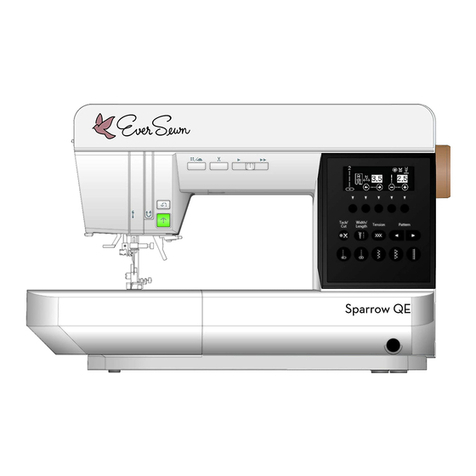
EverSewn
EverSewn Sparrow QE User manual
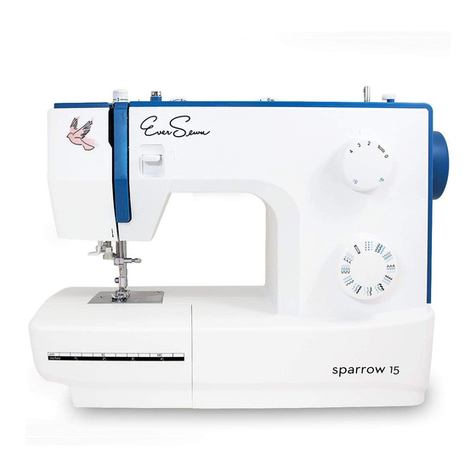
EverSewn
EverSewn sparrow 15 Series Operating instructions
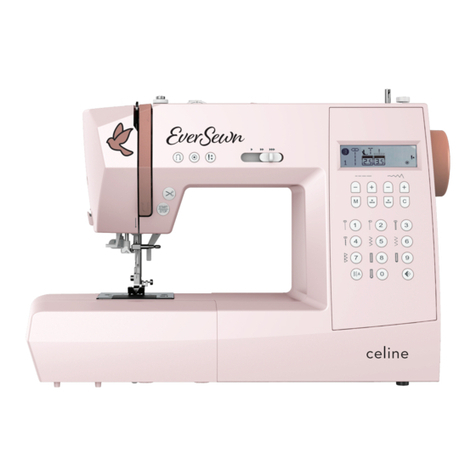
EverSewn
EverSewn Celine User manual
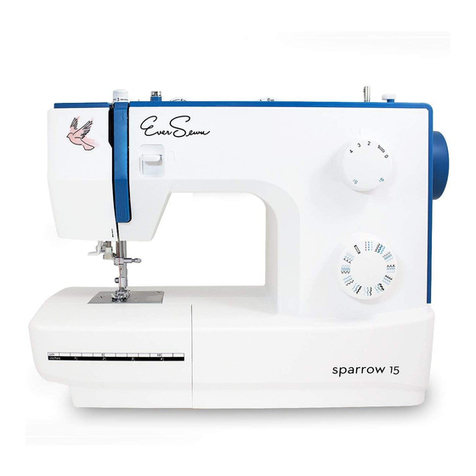
EverSewn
EverSewn sparrow 15 User manual
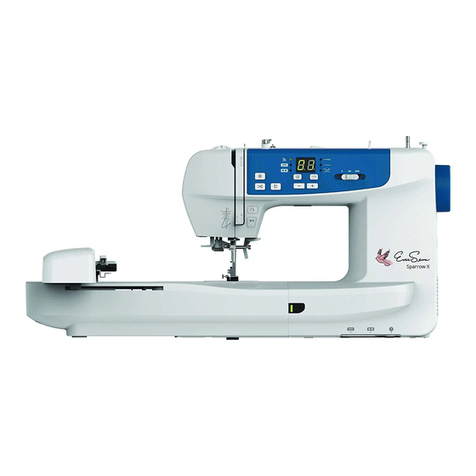
EverSewn
EverSewn Sparrow X User manual
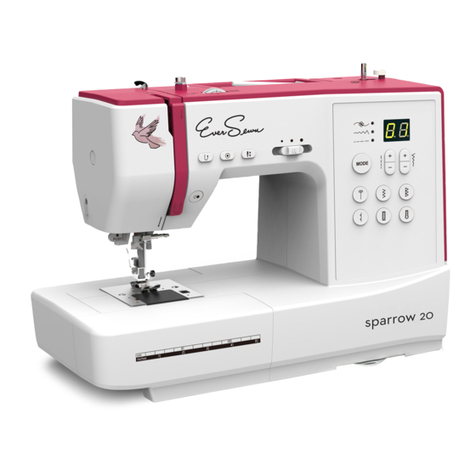
EverSewn
EverSewn sparrow 20 User manual
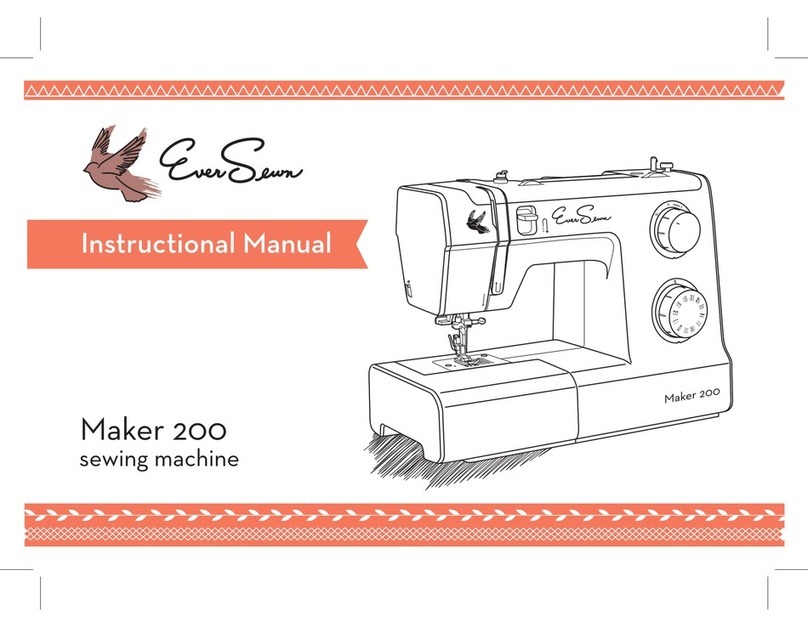
EverSewn
EverSewn Maker 200 User manual
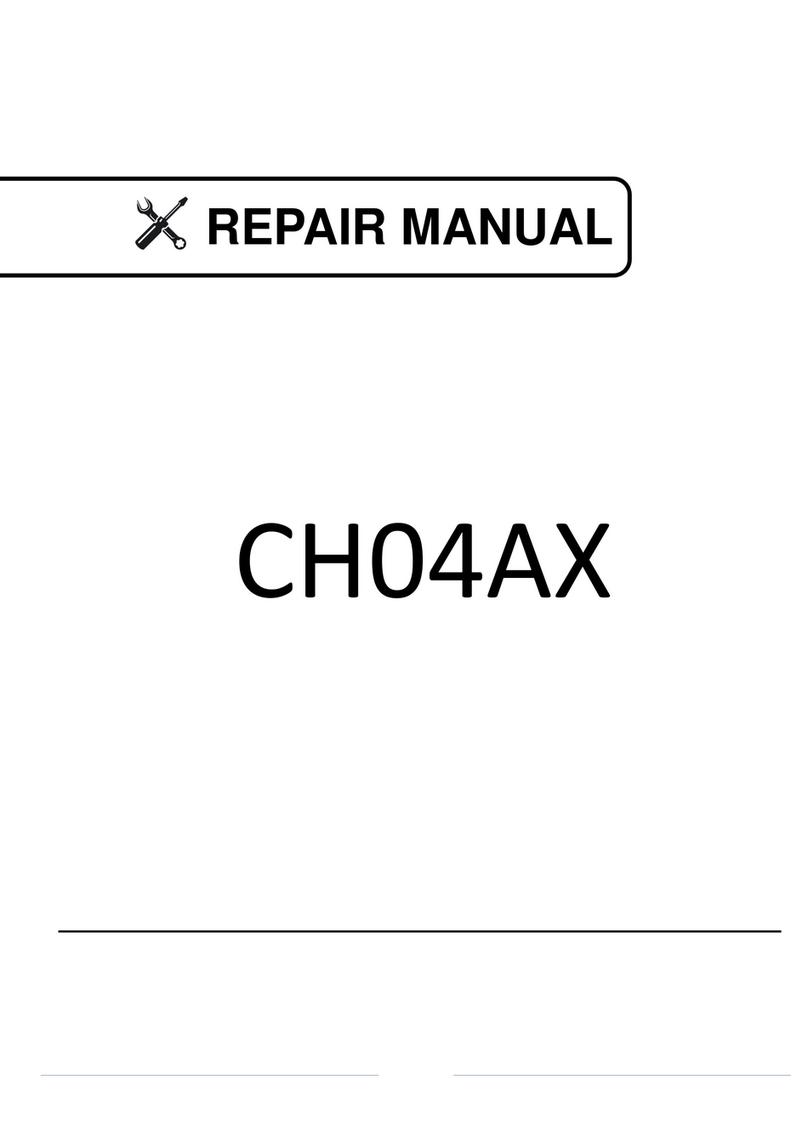
EverSewn
EverSewn CH04AX Operating instructions

















